Staff Ride: Matt Beer's NZ MTB Rally-Spec Ibis HD6
STAFF RIDES
Matt Beer's Ibis HD6
HD6: Heavy duty and built for 6-days of blind enduro racing. Standout items are the massive brakes, thick-as carbon rims, hand guards, 3D printed sadde, and a new-age suspension setup.
Matt Beer's Ibis HD6
HD6: Heavy duty and built for 6-days of blind enduro racing. Standout items are the massive brakes, thick-as carbon rims, hand guards, 3D printed sadde, and a new-age suspension setup.
Course Breakdown
In order to give you an idea of the statistics and terrain the NZ MTB Rally covered, each day was broken into sections to exclude the shuttles but you can view those segments here. Don't forget that Matt Fairbrother put the "endur" back in enduro and remained self-sufficient over the entire race, and won! Yep, he didn't take one shuttle and even kayaked 30 km across the bay one evening. I'm still trying to wrap my head around what he's made of.
Day 1 - Wairoa Gorge Bike Park section a, section b, section c
This day ended with a banger, literally (you can read all about that further down). The organizers combined the last two stages into one huge final descent of the Wairoa Gorge Bike Park to total 745m descending over 7km.
Day 2 - Kaiteriteri section a, section b
A "proper Kiwi backcountry adventure" through the jungle with loads of 180-switchbacks and a scenic liaison. The last stage took us into the Kaiteriteri MTB Park and ended on the beach with a primo buffet dinner.
Day 3 - Cable Bay section a, section b, section c
This area seemed to separate riders and sharp skills were needed to navigate tight corners filled with rumbly rock. A healthy amount of high-speed, but narrow benches required sharp focus.
Day 4 - Coppermine/Nelson section a, section b, section c
Heli lift number one started with a fast, loose walking track, but as the day heated up, so did the difficulty of the tracks. Rough, steep, and natural trails would make this one of my favorite days.
Day 5 - Wakamarina Track
The second heli of the week took us to remote trails in beech forest with more switchbacks that were tough to spot behind the fern. A physical pedally first stage led into steeper, raw descents.
Day 6 - Nelson City section a, section b
Some of the best corners, liaisons, and laughs of the race were had here. Everyone was buckled after arduous sprints in stage 3, a track built for the 2021 EWS that never happened due to the pandemic.
Ibis HD6 Details
• Intended use: enduro racing
• Travel: 165mm rear / 180mm fork
• Wheel size: Mixed
• Frame construction: carbon fiber
• 64° head angle, 480mm reach, 435mm chainstays
• Weight: 17.3 kg / 38.1 lb (as pictured, size 3)
• ibiscycles.com
• Intended use: enduro racing
• Travel: 165mm rear / 180mm fork
• Wheel size: Mixed
• Frame construction: carbon fiber
• 64° head angle, 480mm reach, 435mm chainstays
• Weight: 17.3 kg / 38.1 lb (as pictured, size 3)
• ibiscycles.com
Frame
When I began planning for the NZ MTB Rally, I knew there would be a focus on descending. There were hundreds of tight switchback turns - some on purpose-built bike trails and others on walking tracks - all littered with pointy rocks at the Wairoa Gorge Bike Park. The Ibis HD6 seemed like the perfect fit for the job. We put this one through its paces back in the fall of 2023 during our Whistler Enduro Bike Field Test and it stood out in many ways.
The HD6 has cushy suspension with a 180mm travel fork, corners on a dime, isn't heavy, and pedals impeccably well for an enduro bike. I slapped on a few more robust components that I knew would be worth the extra weight.
The lower link runs on bushings, which have been trouble-free with just one quick service since the Field Test.
The setup is far from the air pressures I've been riding since the Fall Field Test. Henry worked his magic on the Fox suspension using a BYB data acquisition kit.
Suspension
Both the fork and the shock were set to nearly 25 percent lower than the spring rate I chose, however, the progression was increased to accommodate the lower pressures. You will want to check out the upcoming video on how we arrived at this setup.
Next, the rebound and low-speed compression were set to nearly wide open, while the high-speed compression was almost fully closed. In fact, Ibis has an in-depth suspension setup guide for both Fox components, including a special tune on the rear damper. Using BYB's data acquisition kit, Henry dialed in the suspension to something close to Ibis' suggestions, albeit still much softer and more progressive.
Tires / Wheels
For dry, loose conditions, there are few other treads that match the grip and predictability of the Maxxis Assegai. Only the Continental Kryptotal Fr or Michelin DH22 come close. The classic Maxxis DHR II did well considering the huge amount of rear steering it saw through dust and rubble. Skidding your way around the tight, loose corners and 180-switchbacks is almost necessary in riding zones like Kaiteriteri and Cable Bay.
Carbon wheels for enduro racing aren't the hottest fad because they're generally stiffer, but they're also less prone to denting and subsequent air loss. Giant's new TRX Carbon wheels looked the business with their thick rim walls and got the nod of approval from one of their fellow enduro racers, so they came along for the trip. I'll also have a review coming on those later, but the short story is that they're basically bulletproof.
After suffering an instant sidewall slash from an unseen obstacle one quarter of the way down the final stage, the longest and rockiest of Day 1, I made the game time decision to ride it out and salvage what time I could. Worst case scenario, I knew I had a spare wheel and tire back at base camp if that all went up in flames.
Miraculously, the TRX rim didn't bat an eye, despite some wincing rim-on-rock strikes on the way down. I'd highly recommend at least a rear tire insert for this type of racing and any time spent riding the Wairoa Gorge or Cable Bay Bike Parks. And that's not to fault the tire either. Maxxis DH casing tires are some of the best, but even with an insert, I don't believe anything short of a solid rubber wheel would have staved off that slice.
Brakes
Packing heaps more power to tap into versus the Code RSCs, the Mavens served well for the long descents, especially once you've been clenching them for some time. In fact, I had issues adapting to other brakes on a test bike. I kept running past my braking zones after riding the Mavens for nearly two weeks straight.
After the race, I hung about in Queenstown and swapped to a larger 200mm rear rotor. I found there to be a larger window to brake consistently without totally locking up the wheel.
Contact Points
The Specialized Power with 3D-printed Mirror technology might be that ceiling. $450 USD is a staggering number for a saddle but what does an ergonomic desk chair cost? A saddle is where I do a fair bit of my work, plus it gives me a good reason not to crash; I might cry if this ripped.
Race Face's Chester grips have been growing on me. They've replaced the ODI Elite Pro as my new favorite due to their soft, rubbery compound and uniform, tapered design. The 31mm diameter version doesn't make them the most padded under the palm, but they fit my medium-sized hands nicely. If you're looking for more padding, there's a 34mm version too, however, I've found oversizing can lead to faster hand cramping.
The four-sided Eggbeater clip mechanism rotates completely independently of the outer platform. Essentially, you can place the cleat anywhere within the proximity of the Eggbeater and wiggle your foot forwards or backwards to clip in. That means you'll never have to sit or stand heavily on one foot to clip in.
Drivetrain
SRAM's XX Transmission-series drivetrain eliminates the derailleur hanger. Granted, you don't destroy the pulley cage, the derailleur parallelogram can withstand some seriously heavy smacks. Due to the synced shift timing and cassette chain ramps, you can shift under full power and mash through gears when approaching sudden uphills or while sprinting.
I pinched the alloy SRAM X0 crank arms from another test bike for some peace of mind. The carbon XX set that came on the top-end HD6 build kit are plenty strong, but aluminum can take unsuspecting smacks when racing blindly.
A chain guide and skid plate double down on drivetrain protection for what is an insignificant weight savings. Pedal catchers and chainring munchers were lurking everywhere in the spotty jungle light.

OneUp's Carbon bars have been a favorite of mine for their shape, medium amount of flex, and most importantly, vibration absorbing qualities.
Cockpit and Controls
You'll want narrow bars for the tight trails, off cambers and bench cuts with trees hanging overhead. I cut mine to 765mm wide, and like the OG 35mm length stem, they've been around the garage for a few years now. The 35mm rise bar has 20mm of spacer underneath for a moderately high and energy-saving riding position.
Hand guards might look funny at first, but they protect your levers in two ways; from surprise branches which can turn the brakes on unsuspectedly and against bending in the event of a crash, to a degree. They're not ideal for throwing tricks, although they are useful for traipsing through backcountry trails, whether that's against the clock or just the amount of daylight left in a big day out.
Rockshox's Reverb AXS electronic dropper post is such a slick piece of equipment. No cable means less chance of damaging a critical component and the remote requires much less accuracy or effort to hit when you're mouth breathing heavily through multiple 60 second in-stage climbs (I thought the race director was joking). I never needed to charge the main battery over the six days, however, I did save some juice by removing it while shuttling since it "wakes" during motion.
On long ascents or commutes, I may raise the post 15cm out of the frame, but I can get away with the maximum 170mm length drop for most on-trail scenarios. I know a few others that are praying for a longer version though.

USWE's MTB Hydro 8L Hydration Pack carted around the essential supplies for the unknown. These packs are more stable than anything else out there.
What's Onboard?
I love techy gear and prefer to be over-prepared. The essentials for each day were lots of snacks, electrolytes, sunscreen, and at least 1.75L of water. USWE packs are so convenient and secure by connecting just one buckle. You can run that open on climbs for looser fitting shoulder straps too. Forget overloaded bib pockets or running vests that bounce around.
The majority of the riding locations were very remote so I thought it would be wise to bring along a Garmin InReach Mini and EpiPen, just in case of a medical emergency, not limited to myself - mind you, medics were stationed at the bottom of each stage. Other handy items included a light windbreaker and sporty hat, gorilla tape, zip-ties, some shop towel, a small bottle of chain lube, an extra 2032 and AXS battery, plus a multi-tool with pliers with a small knife.
Kiwis run a loose safety program at times. Open-face helmets and no knee pads might be acceptable for mellow trail riding in my books, but blind gravity racing in steep, rocky conditions meant a lightweight full-face and burly knee pads since we were primarily shuttling after all.
How Does it Ride?
Compared to the stock components of the HD6, which we reviewed at the Fall Field Test, the nature of the bike has been beefed up for extra security to handle blind racing, but the geo and travel has remained the same.
That added heft did take a little wind out of the sails when climbing the HD6, but that’s to be expected. I’m glad I chose those bulletproof Giant TRX carbon wheels, DH casing tires, and honestly, a rear tire insert would have made sense.
The largest change was the suspension setup. Lowering the pressures, increasing the progression and turning the damper adjusters to Henry’s recommendations made a world of difference for a long week of racing. More comfort and grip were welcomed on the dry and loose conditions.
The geometry and mixed wheels allow it to whip around tight corners without compromising the high speed stability too much either. That 180mm travel fork eases the fatigue on our hands exceptionally well too.
After spending months on the HD6, I stand by my original thoughts; it’s an exceptional enduro race bike, ideal for epic adventure events like the NZ MTB Rally.
All riding photos credit of Cameron MacKenzie/NZ MTB Rally.
Author Info:
Must Read This Week
Sign Up for the Pinkbike Newsletter - All the Biggest, Most Interesting Stories in your Inbox
PB Newsletter Signup
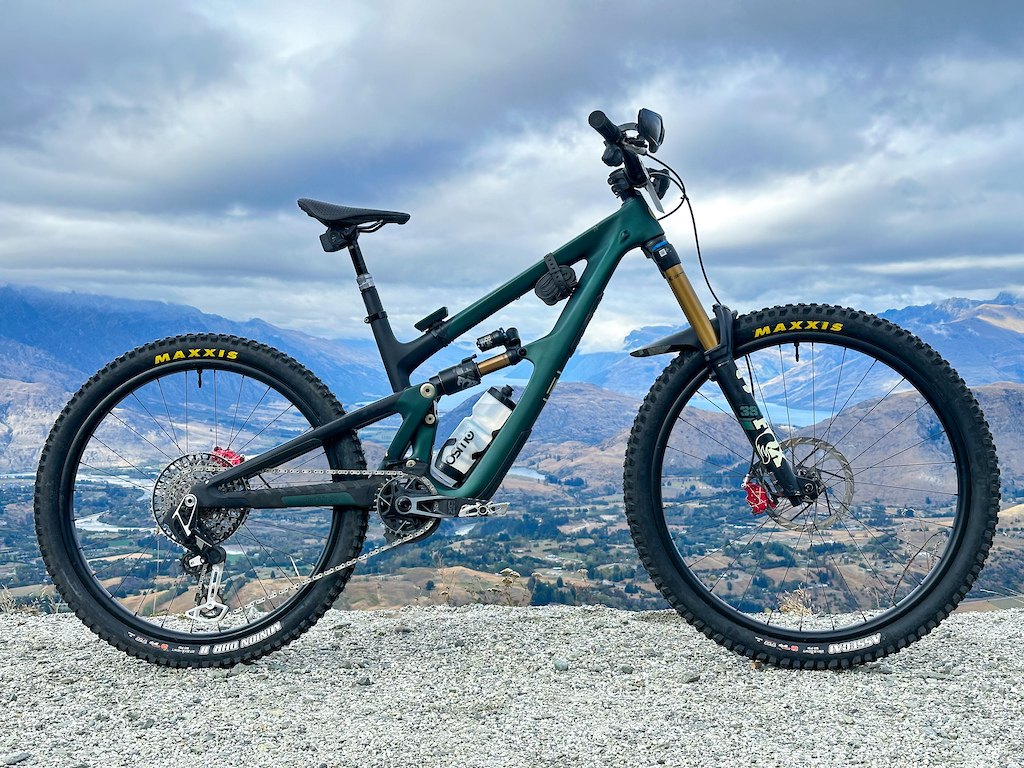
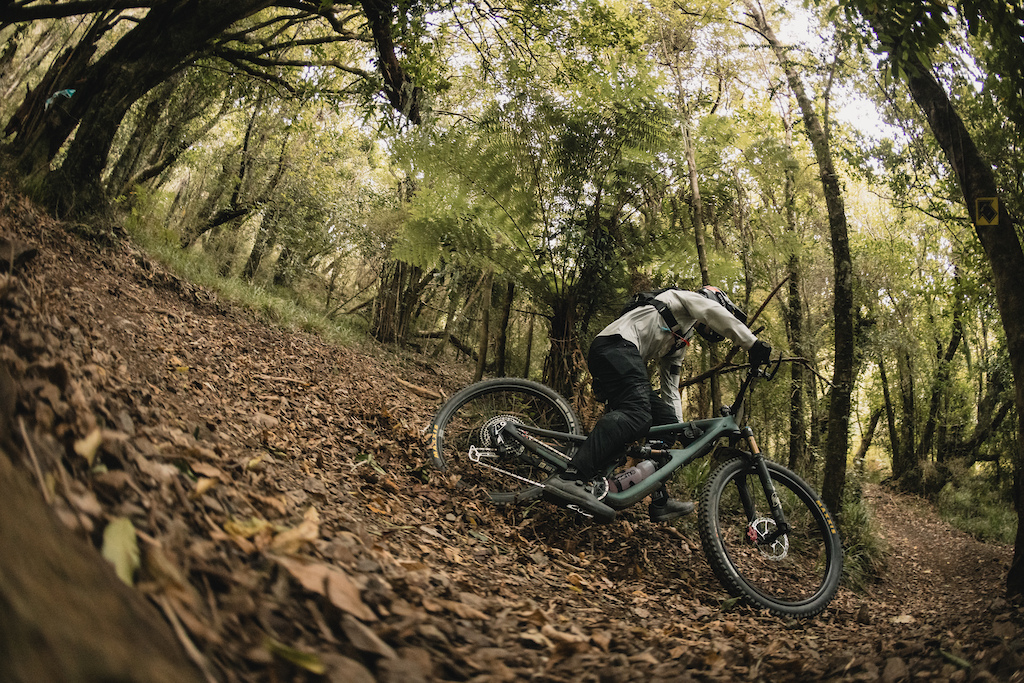



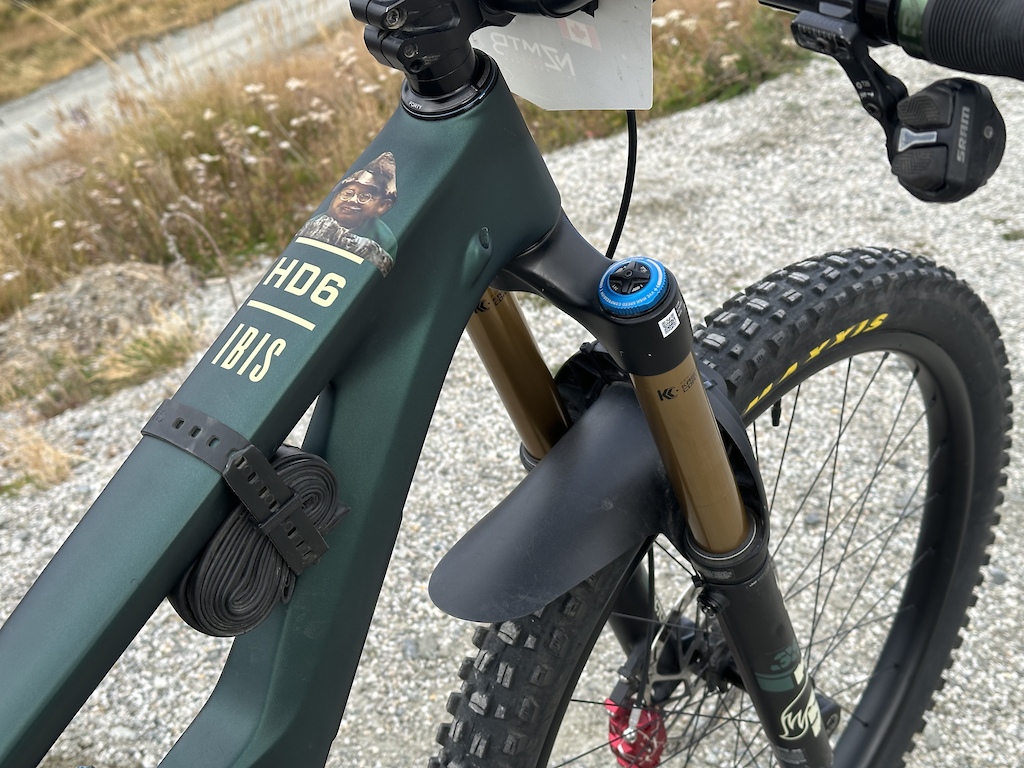









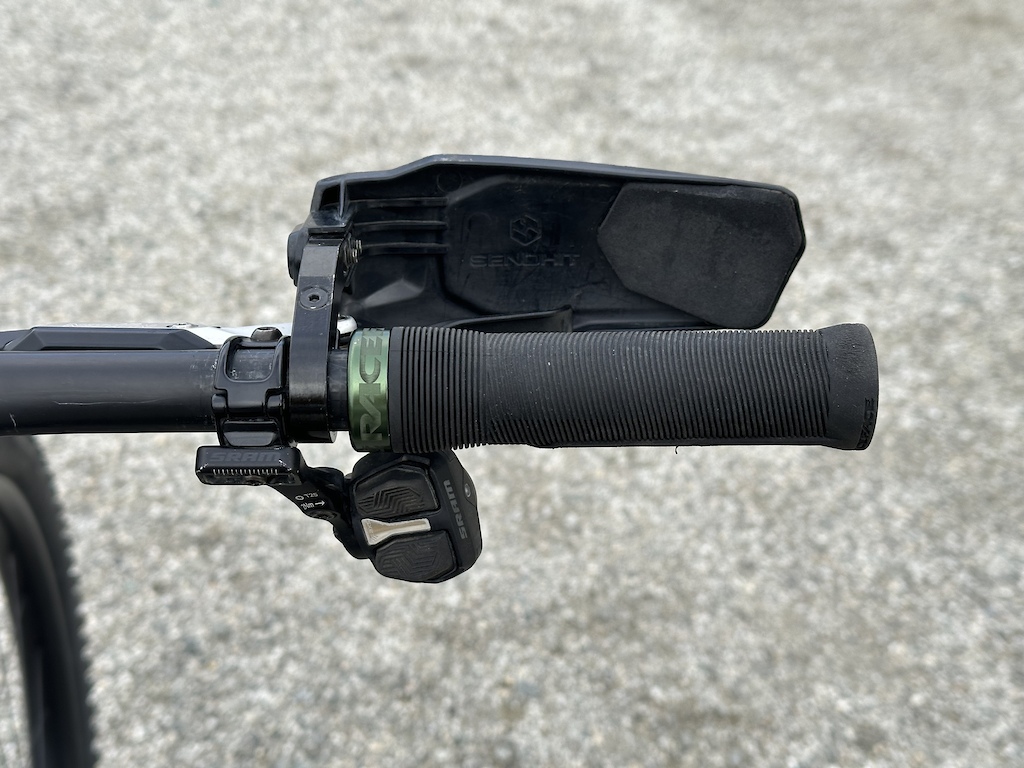
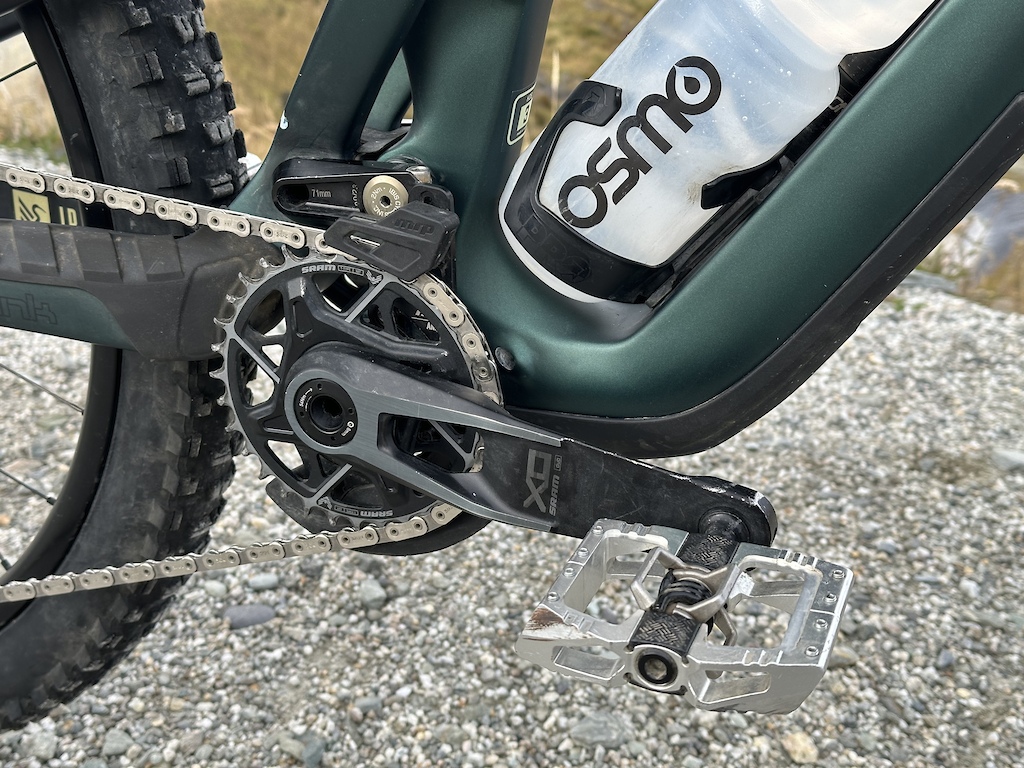




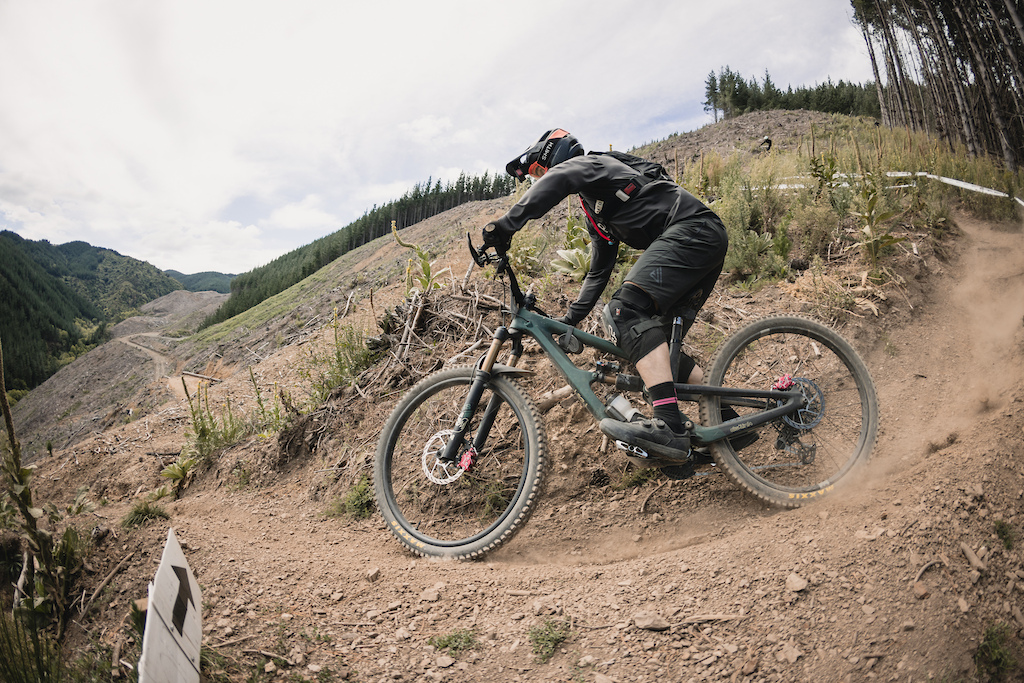
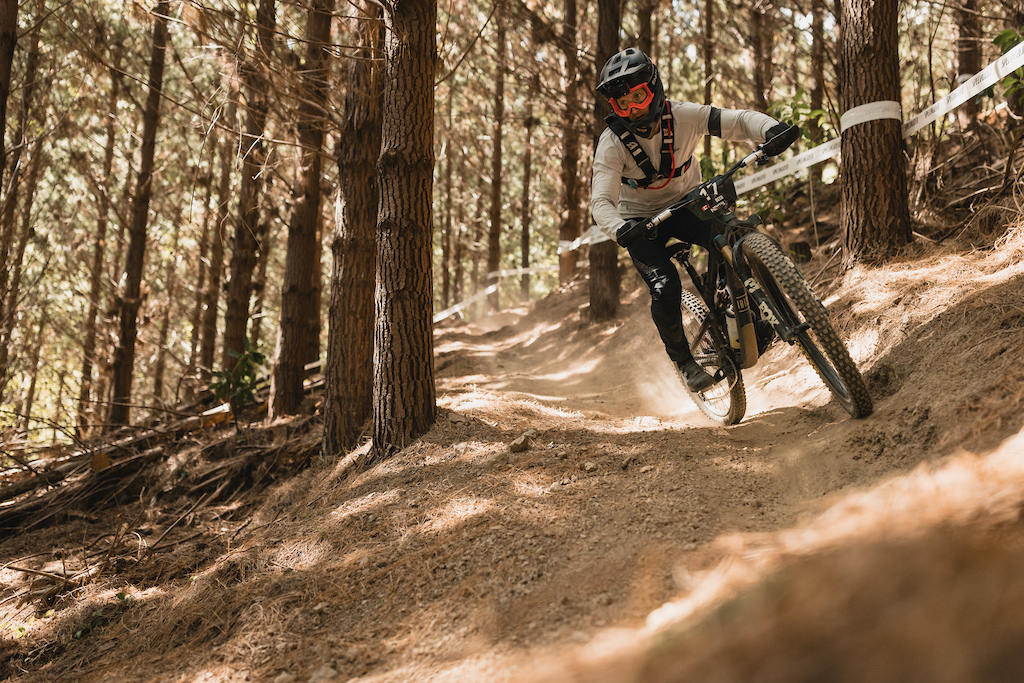

My terrain (Seattle area of the PNW), is mostly winch and plummet sorts of riding. The angle of the seat basically means when you are climbing a steep grade, it’s the same as using a horizontal/flat angle on a flat trail.
On flat trails where you are pedaling long distance, it’s not ideal. But I don’t really have many segments of trail that are flat. It’s either steep uphills and pedaling, or standing and going downhill.
The Sea to Sky (and other regions) contains a lot of 45-90 minute climbs that probably average 10º but have sustained sections of 15-17º and some lovely little sections of 20º+.
Run your mouse over this little gem as an example: www.trailforks.com/trails/rainbowsproatt-flank
That smacks you in the arse after a 45 minute climb (for the fitter rider) on your way to Upper Howler. Or the climb to Lord of the Squirrels at the other end of the valley which is two hours for a decent climber.
I have found that the saddle angle works out at approx 1º nose down for every 4-6º of average climb angle depending on personal biometrics and preference.
Good enough for Matt is probably more fork than I'll ever need
Some manufacturers tend to be a little worse but it never hurts to have a basic service done on any new fork or shock so you really know it is set up properly and there is the right amount of the right stuff where it aught to be.
went for another ride, felt meh and wanted more support. so went from HSC-1 to HSC +1, and let the air spring as it was. LSC is still around -4-5
that did the trick! never "relied" on compression before as i alsways run it open.
And still feel the need to babysit said e-dropper to avoid possibly needing to charge batteries...
The glorious future is here!
I use the UltrAspire Alpha 5.0. I carry my phone, wallet, keys, and snacks in the front pouches for easy access, and hydration (bladder) and clothing in the back.
It's amazingly breathable, no matter how loaded up it is it never moves around, and I forget I'm wearing it as soon as I point downhill. I can't imagine ever using a traditional backpack or a hip pack again, running vests are an order of magnitude better IMO.
For really long rides where I need extra water and food and other items I still use a backpack, the uswe 15l with integrated back protector and that thing is solid and definitely my go to pack. I still tend to choose the hip pack most of the time and it forced me to think about the things I carry and only take stuff that is really needed (I am still the guy that has the most tools and spares in my riding group) and to try to strap as much as possible to the frame itself.
Going back pack free is great, but it is something that only works if the conditions are right and you have a setup that suits your needs.
All that said - yes my bike has them
www.pinkbike.com/news/video-highlights-from-the-nz-mtb-rally-2024.html
Here is a zoom and a cotrast stretch.
imgur.com/a/wR74lRG
It's not "synced", its artificially delayed, to ensure the shift ramps get engaged properly for each shift. You can do the same shifting under power with Eagle or HG+ by clicking through one shift at a time. I see it happen all the time, and you can too: follow a Transmission rider smashing through clicks, and make a mechanical shift every time you hear it buzz. You can easily keep up with shifts, and you'll get nice and clean shifts. One. At. A. Time.
And "cassette chain ramps", aka shift ramps, have been around for-ever, being literally _the_ thing that made OG HyperGlide what it is.
Interesting call out when you added 20mm of spacers and 35mm of rise...
No LSC will cause wallowing and won't provide support, while closed HSC will spike on big hits.
m.pinkbike.com/news/enduro-world-cup-bike-weigh-in-courtesy-of-edbull-media-house.html
The Comments section is infested with roadie dads riding blue squares on exo tires and weighing their bike on the bathroom scale.
Matt's HD6 is 38 lbs ("as pictured") includes full (?!?!?) bottle/cage, pump, tools, tube, GPS, brush guards, clip-in flat pedals, DH tires, burly brakes. Add 5-7 lbs for those things above manufacturer quoted weights. (Ibis says the lightest Lg HD6 build is 31.7 lbs) Durable component mods, not gram-counters' choices.
If you wanted to pull that weight back, you'd be looking at major component changes like carbon or Ti cranks (even X0 transmission cranks are not svelte), and trimming bits of weight here and there at great expense.
The "more weight = more stability = enduro benefit" argument is really interesting. And I can imagine that applies much more to sprung mass than unsprung. Theoretically it still seems really beneficial to reduce unsprung, especially for high-budget builds - your point about smaller cassettes holds up really well for DH with racers always opting for small clusters (though there is a wheel strength benefit too). There is some stability benefit via increased gyroscopic effect from larger wheels, but at the expense of cornering effort and of course pedal spinup effort, but for DH and somewhat for enduro racers, maybe that's not as detrimental as it is for us weekend weenies who suffer from burrito weight more than rotating mass.
Even when frame weights aren't that high, adding durable and expensive parts means nearly all enduro bikes weigh the same.
"Based on" perhaps? They're not a derivative of DW-link, they build _on_ the foundation of DW-link. I think the phrase "based off of" implies a derivative, which isn't really the case here.
Come on, that's a many years out-of-date generalization. You're better than that.
Modern carbon wheels are amazingly adaptable! Some are stiff, some are soft, some have combinations of lateral stiffness with enhanced vertical forgiveness while also maintaining insane overall hoop strength and ridiculous impact strength. You guys should do a double-blind test ride to find out if any one can actually determine which is which before continuing to spout outdated bullshit.